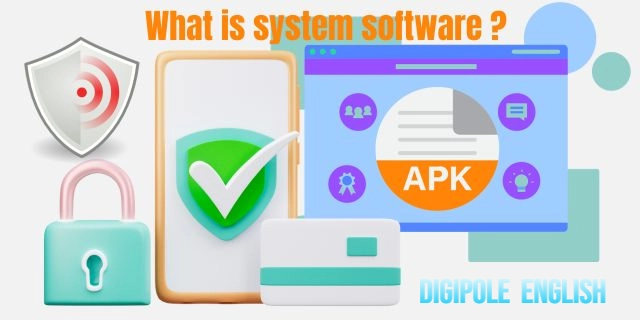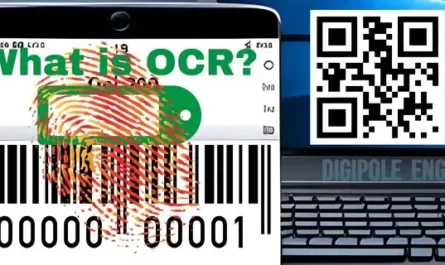Today, in this digital dependent world, almost all of us use modern devices like computers, and smartphones. A computer instantly solves the most complex tasks for us and provides us relief in some ways.
But the question is whether only a computer is capable of solving such complex solutions or is there some other power working behind it.
You understand absolutely right, I am talking to you about system software. Actually, this is software that makes your computer or smartphone so capable.
Although many of us know more / little about software, but do you know what system software is? How system software operates your computer and smartphone. How important is system software to a computer device?
In this article, I will tell you about all those things related to system software, that you might not have seen or heard anywhere else. So, being with us and read this article carefully.
Table of Contents
What is system software?
System software operates and manages all types of hardware accessories present on your computer. It is a computer program that runs application software to control or enable all the hardware devices connected to your computer.
For example computer memory or storage systems, audio and video systems, printing systems, etc. System software is generally do not directly accessed by users like other application software. It works from behind to operate and manage all factions of the computer.

Maybe it is still confusing you and it is not clear to you what this system software is. Don’t worry, let’s try to understand it more clearly with some more examples below.
Types of system software with examples
‘system software’ refers to a category of computer programs that provide a platform for the execution of application software and enable the hardware to function properly.
It works like an intermediary between hardware and software to communicate and provide essential services for whole computer systems. Here are Some common examples of system software :
- Operating System (OS): Operating System, also called (OS) in short, works to run the entire computer system. Microsoft Windows (MS Operating System), MacOS (mac), Linux, iOS and Android are its main examples. It manages the functionality of all the hardware, memory, and files on the computer and provides an easy interface to the users.
- Device Drivers: Drivers serve as master commands to control and manage devices that connect to the computer system as input or external devices, so that they can interact properly with the computer system.
- Firmware: Firmware is a microcode computing program. It helps computer devices to cooperate with the functionalities of the computer. It embedded in the memory of hardware devices and enables external devices like cameras, mobiles, network connectivity, printers, routers and scanners to work smoothly.
- Utility Software: These programs assist in the management and maintenance of computer systems. For example antivirus, disk management tools, data backup, and system optimization tools. It helps users perform tasks such as data backup, disk defragmentation, and system diagnostics.
- Language Translators: Programming language translators are software programs that translate code or machine language written in one programming language into another programming language. Some common examples of programming language translators are compilers, interpreters, and assemblers, etc.
- Boot loaders: These are the software that initializes the OS during startup. They are responsible for loading the operating system into main memory from a storage device, such as a hard disk or USB drive, and transfer control to the operating system.
What and How does system software work?
”System software” is utilized to manage and execute the computer system. It runs in the background and does its work to maintain the basic functionality of the computer, so users can run higher-level applications to accomplish a specific task. It flows a life cycle for application software to run the computer along with its internal and external devices.
- Hardware Management: It provides detailed information about all the hardware combinations that used in your computer. You can check the configuration and trace each computer connected to your network. You can also track what software is installed on which computers in your network.
- Security and Protection: It secures your computer from various external threats like malware or other harmful accesses. Firewall protections, antivirus software, and many other encryption related tools help you in this and maintain your data privacy.
- System Stability and Efficiency: System Stability means that all the resources connected to the computer system work smoothly without any conflict and without any disturbances. It maintain your entire computer system and controls the maintenance costs.
- Software Development: It provides developers with a compatible platform with the necessary tools and libraries to create or improve application software. Such as programming interfaces or APIs, compilers and debugging which helps developers to develop an efficient and effective application software.
Difference between system software and application software?
Below is a table showing the main differences between system software and application software:
| Parameter | System Software | Application Software |
|---|---|---|
| Purpose | Provides a platform for running and managing computer hardware and other software applications | Designed to perform specific tasks or functions based on user requirements |
| Examples | Operating system, device drivers, utility programs, programming language translators | Word processors, spreadsheet programs, web browsers, video editors |
| Interaction | Runs in the background and is less visible to users | Runs in the foreground and is more visible and interactive to users |
| Dependency | Independent and can run on its own | Relies on the platform provided by the system software to function |
| Programming | Complex programming for managing computer resources | Programmed in high-level languages like C++, Python, or JavaScript |
| User Benefit | Essential for the computer to function properly | Assists users in completing specific tasks and managing data |
| Examples | Windows, macOS, Linux, compilers, debuggers | Microsoft Word, Excel, PowerPoint, web browsers, video editors |
FAQs
Q) What are the 3 main types of software?
A) Generally, ”Software” is utilized to control a computer. There are different types of software used to run the computer. The three main software are as follows: 1. System Software, 2. Utility Software and 3. Application Software.
Q) What are examples of system software?
A) The main examples of system software are Windows, MacOS, Android , iOS. These are the operating systems that run different computing devices. All of these are responsible for loading into RAM and managing the hard drive when the device is turned on.
Q) What is the use of system software?
A) System software utilized for managing and controlling all the hardware resources connected to the computer. It helps in keeping the hardware connected to the computer working smoothly and keeping the entire environment of the system safe.
- What is a Compiler?Difference between Compiler/Interpreter - November 27, 2023
- What is system software? How it works and its types - November 26, 2023
- Why website does not rank despite good SEO? - November 25, 2023


